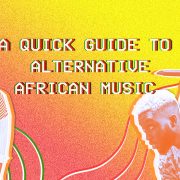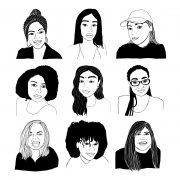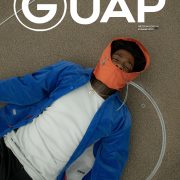A Quick Guide to the Alté/ Alternative African Music Sub-Genre

Throwing ‘Alternative’ in front of ‘African music’ is a complex equation. It forces us to grapple how firstly ‘African music’ mashes the culture of more than 50 countries into one category. It then confronts us with unpacking the set of western preconceptions of the continent; What is African music when we think beyond tribal drumming, the punchy computerised beats and catchy-lyrics?
Alternative music is classified as anything that is eclectic, original, or challenging than most popular music. The term is intentionally vague and intends to give a platform for artists to break from a conventional moulds. It gives space for the musician’s tendency to be innovative and reinvent genres.
This way of thinking is driving young African artists to push for their music to be recognised as ‘alternative’. It has led to a small group of Nigerian artists to define themselves as part of a movement called ‘alte’.
As a classifier ‘alternative’ in front of any genre gives warning to the listener to be prepared for something new, to open their ears to a constantly evolving, and re-imagined idea of what music is. It hints towards the wide span influences that have been borrowed to create a new sound.
For the past few years alternative African music has been pushing to deviate from stereotypes of what African music is, so here is a quick round-up of things to help you understand the movement.
Defining tracks:
Although experimental and alternative African music has been around for a while, the use of the term ‘Alte’ can be traced back to 2010, when it was coined by DRB Lasgidi members Teezee and BOJ. It has also been credited to the members of the group, LOS.
The trio of Nigerian artists, Odunsi, Zami and Santi have been instrumental in pushing to show Alte as a sub-genre, creative scene and sub-culture.
This has created an instantly recognisable aesthetic, which is defined by a unique style that fuses the artists Nigerian roots with western cultural influences and nostalgia. Often accompanied by lo-fi fuzzy VHS style videos.
Influences:
In recent years with the proliferation of streaming platforms like SoundCloud, African alternative music doesn’t fall far from alternative US and UK music.
Internet culture and the transition from Myspace to Soundcloud is a relic of many musicians early career across the globe, Africa included.
The music reflects a rich, new globalised version of African music coated in international influence. Native Mag writer, Toye Sokunbi summarises this best when he states:
“There is no truer reflection of how quickly Afro-urban culture is evolving like the DIY music scene.”
Alternative African’ music has soundscapes that hail from neo-soul, disco, trip-hop, r&b, electronica.
A defining feature of Nigerian’s alte scene, however, is its clear infusion of traditional African drum rhythms. Many musicians creating a more uptempo and dance based track use this technique as well.
On the more electronica leaning side, artists can be seen borrowing elements of South African house, integrating elements of bounce music and using sample based loops reminiscent of Kaytranda.
Lyrically, Alte/Alternative African music addresses introspective and emotive topics, it delves into areas that are unconventional or taboo. It seeks to embrace topics that are not at the forefront of africa culture. For example, singer songwriter Amaarae is sex positive and tackles women’s sexual expression in her writing.
Who’s Involved?
Many Nigerian artists have self identified as members of the ‘Alte’ scene, such as Odunsi The Engine, Santi, Zamir, Tay Iwar and WurlD.
Outside of this prominent group, other Nigerian alternative artists include Lady Donli, AYLØ, Wavy the Creator, Prettyboy D-O and Tomi Agape .
With a few features, Ghanaian producer and singer Amaarae can be identified amongst artists in this scene. Ria Boss is also a stand-out alt R&B singer from Ghana.
Heading away from the West, many Kenyan artists are also dabbling in an alternative, experimental sound. Such Jaaz Odongo, Just a Band and singer-songwriter Muthoni Drummer Queen.
Amongst the realm of more dance driven alternative music, there’s DJ Suraj, producer Sichangi, and Jowaa.
These are just a few recognisable names among the many artists experimenting with the alternative sound.
Top Picks:
To conclude, here are some tracks that really encapsulate the sound of Africa’s alternative wave:
Kenyan producer, Sichangi lays an echoing vocal loop on a smooth blend of clicking percussion, synth and bass on ‘I Don’t Wanna Give Up’. At just over two-minutes the track is short and sweet.
‘Showdown’ is nothing short of club banger with it’s catchy chorus and uptempo rhythm. But with it’s eccentric instrumentation and minimalism it’s far from what we usually hear from African dance music, it’s almost reminiscent of early 2000s club music.
Nigerian artist Yinka Bernie has a more stripped down, bare essentials approach to creating alternative music. His track ‘Palmwine Chills’ is a clear example, his passionate delivery combined with the softy sung chorus ensure that vocals take centre stage on this track.
In the run up to his album dropping this July, AYLØ released the chilled, slow burner ‘PARIS!’. The track is the brainchild of AYLØ, and the two alte frontrunners Le May, Odunsi who co-produced the track.
‘Queen Esteem’ is one of Santi‘s earlier tracks and shows him years ahead of the game. The song toys with a moody, trap-infused style of R&B which contrasts with Santi’s staccato flow.
With its booming, fuzzy drum rhythm ‘Sunday Feel’ channels the underlying nostalgia in Africa’s alternative movement. Ria Boss‘s attention to detail is otherworldly. The track feels like an older record, and calls on all the tricks laid down by those who preceded Boss allowing her to create something that feels familiar.




![ZINO VINCI’S ‘FILTHY & DISGUSTING’EP BRINGS YOU TO THE CORE OF THE ARTIST [@ZinoVinci]](https://guap.co/wp-content/uploads/2023/10/Zino-4.jpg)




